|
|
图文并茂的介绍:
Henri Cartier-Bresson’s Sayings
Henri Cartier-Bresson’s SayingsPosted by Greg On October - 13 - 2010
Lately I came across something I didn’t realize existed – collection of Henri Cartier-Bresson’s quotes, and they fascinated me! I learned from them so much about Bresson’s vision of photography, and I also could understand better his photographs. I have also enriched my understanding and feeling of photography from Bresson’s quotes, and I think any evolving photographer would benefit greatly from reading them.
One thing to remember though is that Henri Cartier-Bresson was a photojournalist (he is actually considered a father of modern photojournalism), and many of his sayings result from this type of photography.
In this article I am going to present you my favorite Bresson’s sayings “bundled” with his photographs for better impact on you
-------------
” To photograph is to hold one’s breath, when all faculties converge to capture fleeting reality. It’s at that precise moment that mastering an image becomes a great physical and intellectual joy. “
-------------
The photograph below is a great visualization of this idea. The captured moment was there only for a brief moment with no chance of repeating itself.
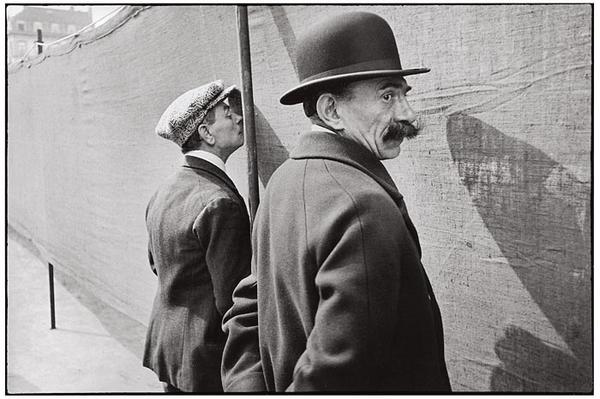
-------------
“To take photographs means to recognize – simultaneously and within a fraction of a second – both the fact itself and the rigorous organization of visually perceived forms that give it meaning. It is putting one’s head, one’s eye and one’s heart on the same axis.”
-------------
Again, the photo below illustrates this saying perfectly. All the elements in it had to be there to get final result. There is nothing redundant in it, all the elements contribute to it creating the final impression.
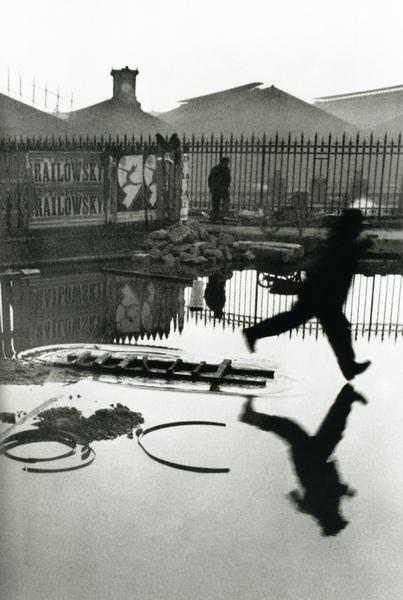
-------------
“The most difficult thing for me is a portrait. You have to try and put your camera between the skin of a person and his shirt.”
-------------
The photo below is a portrait of Henri Matisse shot by Cartier-Bresson, in which you can see two of his (Matisse’s) greatest passions – painting and pigeons. Actually I found an article about Henri Matisse in Wikipedia, but there wasn’t a word about Matisse’s pigeons. Nevertheless I was sure that they must play an important role in his life if Bresson included them in the photograph. So I kept looking for a more elaborate biography of Matisse just to make sure that these pigeons weren’t just a one-time subject of Matisse’s painting. And guess what, I found it – Marguette Bouvier in interview said about Matisse: “Henri-Matisse has a passion for birds. He considers a bird cage as indispensable as a bed in a bedroom…”. In the Matisse’s portrait there are also three bird cages, and now you know why they are there. As you can see there is no meaningless objects in Bresson’s photos.

-------------
“Photography is nothing – it’s life that interests me.”
-------------
It is also something to be thought of. Photography by itself is nothing really, you don’t photograph just for photography’s sake (at least I don’t). You photograph to express yourself, to show something that caught your attention…
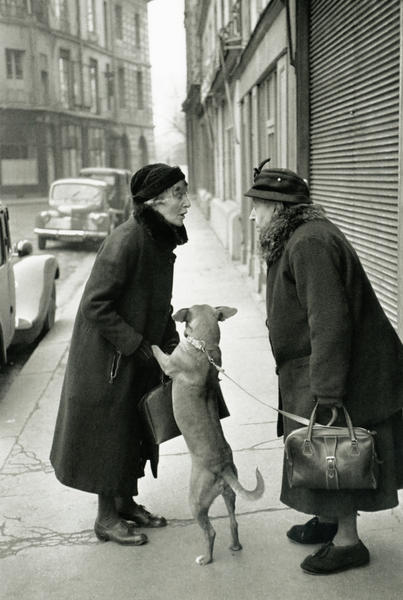
-------------
“You are asking me what makes a good picture. For me, it is the harmony between subject and form that leads each one of those elements to its maximum of expression and vigor.”
-------------
I don’t know about you, but for me this photo is powerful, and it is such not only due to the look and posture of man on the foreground but also because of the second figure behind him on the right. There is a certain similarity in the way how they look at the camera. One of the thoughts that went through my mind when looking at this photo is that maybe the person behind is the father. Or even in general looking at these two men made me think that when you are young, you are strong, and with age your body looses it’s toughness but your gaze stays the same…
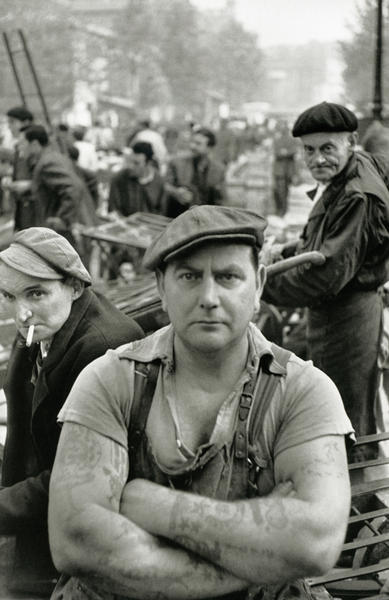
-------------
“This recognition, in real life, of a rhythm of surfaces, lines, and values is for me the essence of photography; composition should be a constant of preoccupation, being a simultaneous coalition – an organic coordination of visual elements.”
-------------
If you didn’t understand the “rhythm of surfaces, lines … ” part, take a look at the rhythm of trees in the photo below.
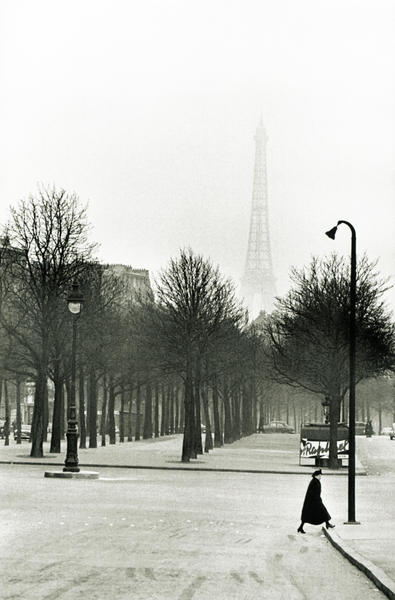
-------------
“You are asking me what makes a good picture. For me, it is the harmony between subject and form that leads each one of those elements to its maximum of expression and vigor.”
-------------
Take a minute to look at the photo below, not just flick through it, and you will see many interesting little details (the gaze of the man standing behind, the little handbag…).
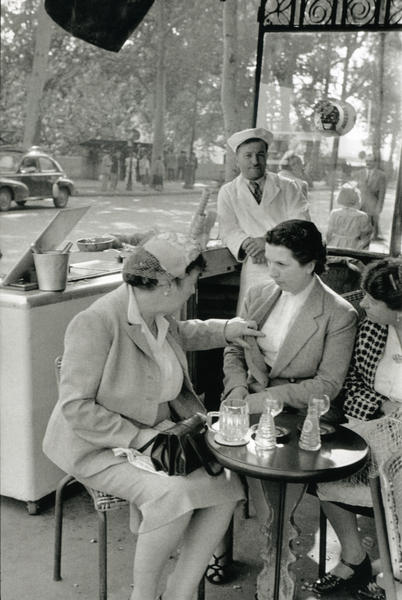
-------------
“To me, photography is the simultaneous recognition, in a fraction of a second, of the significance of an event.”
-------------
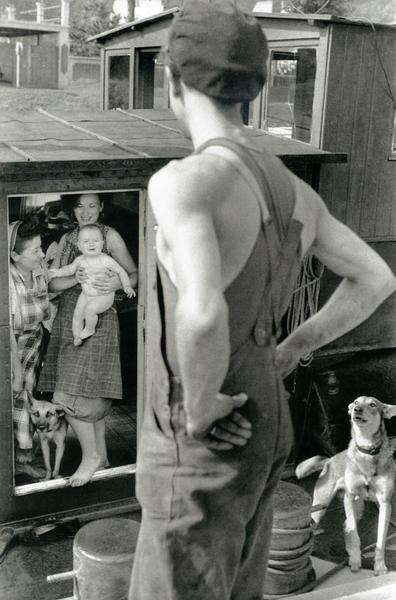
-------------
“I believe that, through the act of living, the discovery of oneself is made concurrently with the discovery of the world around us.”
-------------
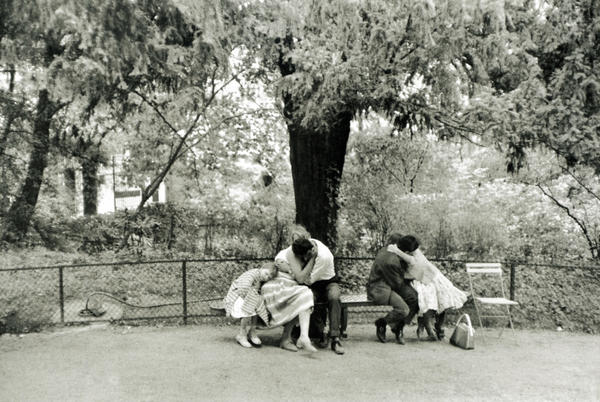
-------------
“Thinking should be done before and after, not during photographing. Success depends on the extent of one’s general culture. one’s set of values, one’s clarity of mind one’s vivacity. The thing to be feared most is the artificially contrived, the contrary to life.”
-------------
This is a powerful thought. In photojournalism and street photography you have to learn to anticipate how the situation will evolve in order to be in the right place at the right time.

-------------
“We photographers deal in things which are continually vanishing, and when they have vanished there is no contrivance on earth can make them come back again. We cannot develop and print a memory.”
-------------
Here is another wonderful example of a fleeting moment caught just at the right fraction of a second.
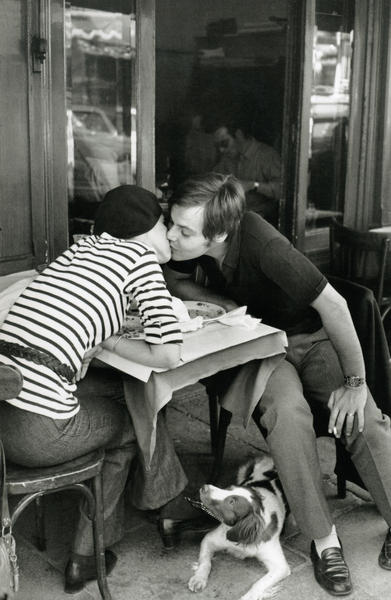
And here is the last quote.
-------------
“Photography appears to be an easy activity; in fact it is a varied and ambiguous process in which the only common denominator among its practitioners is in the instrument.”
-------------
The more I photograph, go over my photos, and think about photography, the more I understand how difficult good photography really is.
I hope you learned something from Henry Cartier-Bresson’s sayings, and enjoyed the photos I chose to present here. |
|